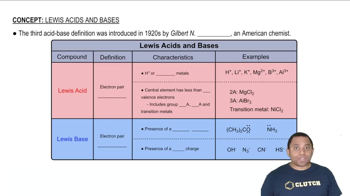Here are the essential concepts you must grasp in order to answer the question correctly.
Acid-Base Neutralization
Acid-base neutralization is a chemical reaction where an acid reacts with a base to produce water and a salt. In this scenario, HCl (a strong acid) and HCN (a weak acid) are neutralized by NaOH (a strong base). Understanding the stoichiometry of this reaction is crucial for calculating the resulting pH after specific volumes of NaOH are added.
Recommended video:
pH Calculation
pH is a measure of the hydrogen ion concentration in a solution, calculated using the formula pH = -log[H+]. In titration problems, the pH can change significantly depending on the amounts of acid and base present. After neutralization, the pH will depend on the remaining acid or the formation of the conjugate base, especially when weak acids are involved.
Recommended video:
Buffer Solutions
Buffer solutions resist changes in pH upon the addition of small amounts of acid or base. In this case, the presence of HCN and its conjugate base (CN-) after partial neutralization creates a buffer system. Understanding how buffers work is essential for predicting the pH at various points during the titration, particularly after the addition of NaOH.
Recommended video:




